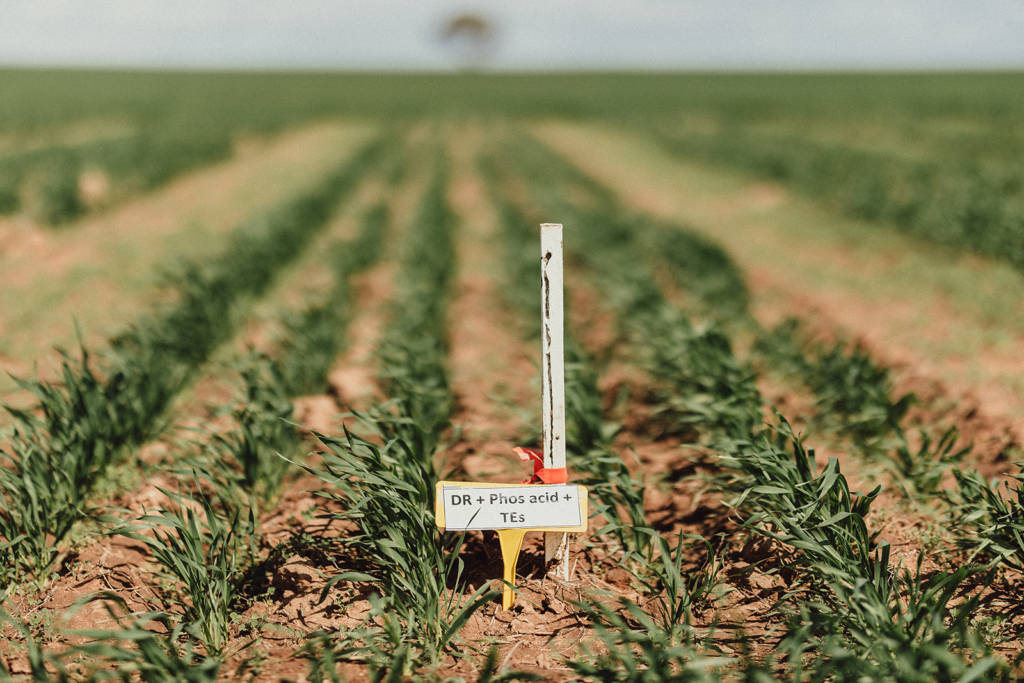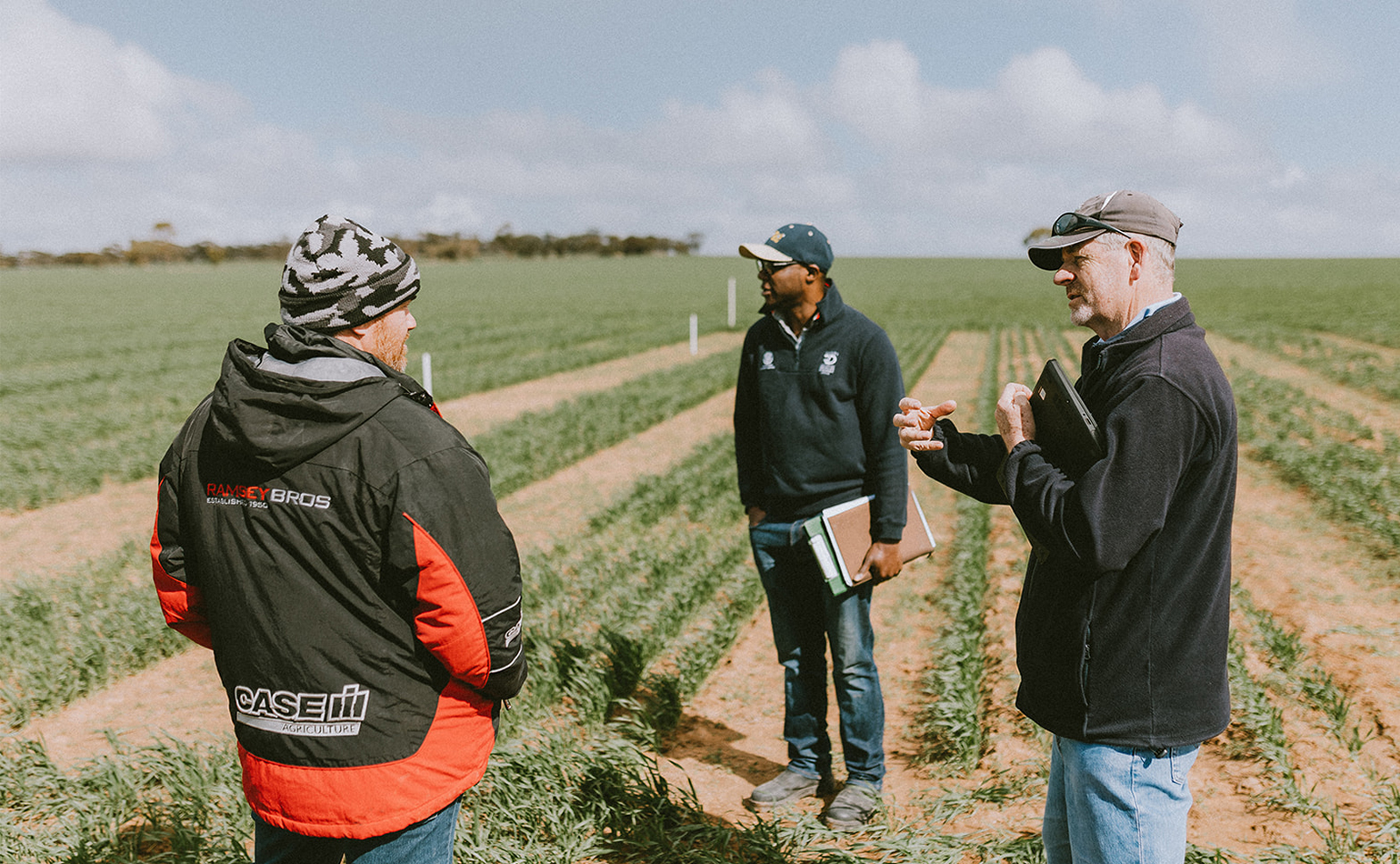Project: Overcoming soil constraints in highly calcareous soils
Project Leader: Dr Nigel Wilhelm, Primary Industries and Regions, South Australia
Participants: Primary Industries and Regions SA, NSW Department of Primary Industries, MacKillop Farm Management Group, Agricultural Innovation and Research Eyre Peninsula
Co-funder: Grains Research and Development Corporation (GRDC)
Background
Calcareous soils present a host of challenges that can severely limit crop productivity – nutritional challenges (low phosphorous, iron and manganese, poor nitrogen cycling) low water holding capacity, high Rhizoctonia burdens, severe fertiliser toxicity during germination, sodicity and salinity.
This project is investigating ways to overcome these constraints to increase crop performance.
An expert panel consisting of grower group representatives, local farmers and advisers and the project team meet several times a year to guide the project and improve engagement with the local agricultural industries. The grower groups have been key to identifying priority issues on these problem soils.
Update
Literature review
The project has completed a detailed literature review on crop production in calcareous soils. A key element of this review is the focus on grey literature; techniques used commercially by farmers and scientists but not published in peer-reviewed journals.
Laboratory experiments
The NSW Department of Primary Industries team have investigated a range of materials to stabilise soil organic carbon to improve nutrient cycling, availability and soil stability. This work identified a type of biochar (a carbon coated mineral) that is a key treatment in the field trials.
Field trials
In 2021, eight field trials were sown across four sites in South Australia. The three sites on the upper Eyre Peninsula (EP) are on highly calcareous (>50% carbonate) soils. Treatments include fertiliser, fungicide, ripping, biochar and organic matter.

At the Poochera site this year, the combination of a high seeding rate, fungicide, and adequate crop nutrition (banded nitrogen, phosphorus and trace elements) has nearly doubled cereal crop vigour (shoot dry matter) compared to the control. The bespoke biochar is outperforming the nutritional-equivalent fertiliser treatment in terms of crop vigour.
The site at Lake Hawdon in the south east is using novel approaches to overcome manganese and iron deficiencies on a high value crop (broad beans). This site is on a calcareous soil typical of that high rainfall areas and is the first major trace element research project in the region in approximately 40 years.
The 2021 treatments had little impact on crop growth during the year – no change to crop establishment or bean nutrition and all plots were yellow and stunted. However, there was a yield effect. Plots treated with trace elements yielded about 1 t/ha higher (6.1-6.3 t/ha) than untreated plots (5.1-5.4 t/ha). This year, beans in the treatments modified from the previous trials are staying green so far and growing more vigorously.
Microbial study
In a related project, a CSIRO team are developing an apparatus to study Rhizoctonia and soil-borne fungus in the soil rather than in agar in a petri dish. This will help us better understand how they behave and respond to treatments in the field.
The CSIRO team are also measuring in-crop fertiliser recovery and nutrient cycling (nitrogen and phosphorous) and the water holding characteristics of the soils.
Next steps
All sites will be harvested later this year and the results collated and analysed. The research team is working with the grower group partners to develop extension materials to communicate the results of the project.

